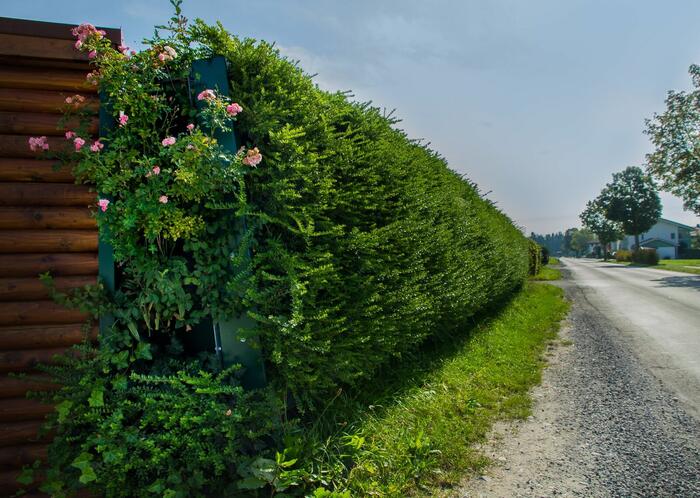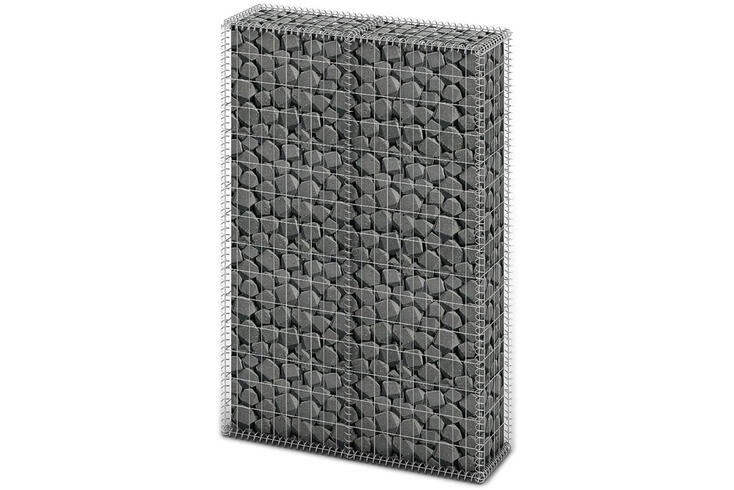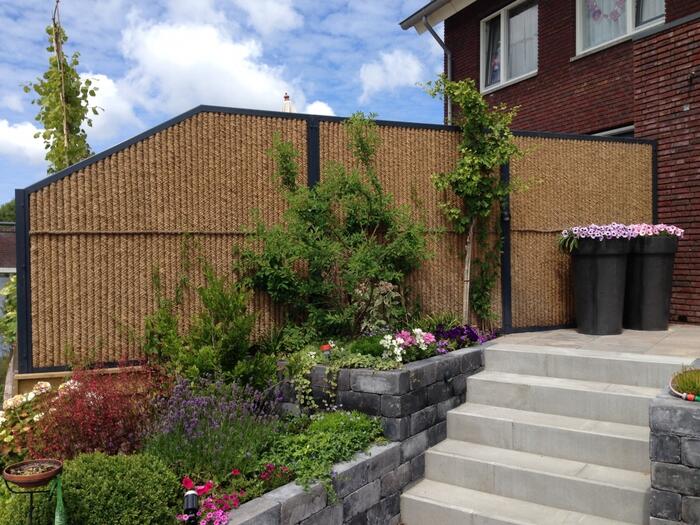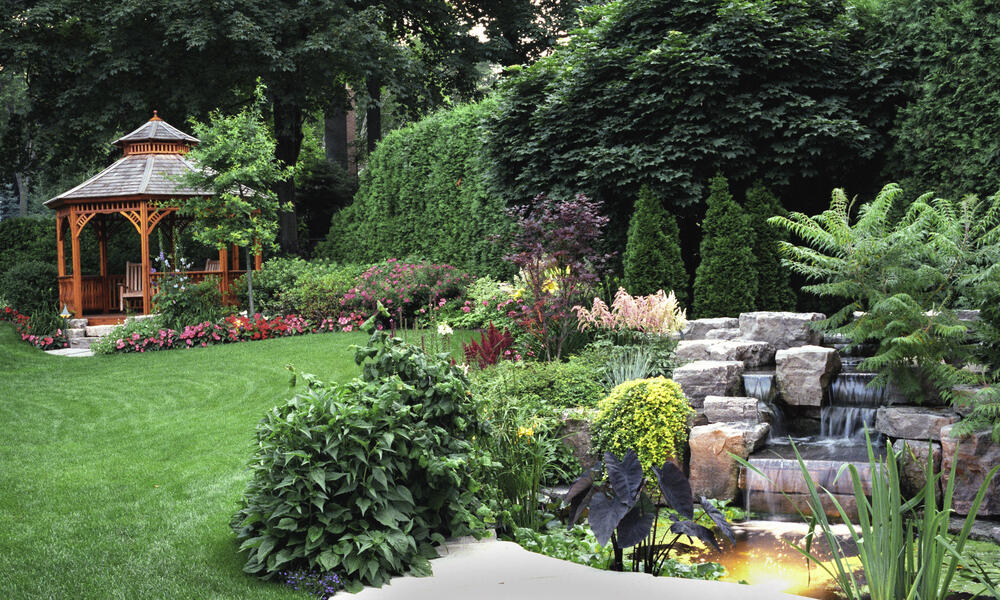A few hours in your own garden: birdsong, the rustling of leaves and bushes, or the gentle splashing of the fountain – wonderful! But there are also disturbing noises: honking cars, trains, loud lawn mowers, engine noise, music from the neighbors or conversations from the street. If you want to enjoy your own garden as an oasis of peace, you can put a partition between you and the noise.
Contents
Noise protection in the garden: these are the options
There are many ways to keep noise out of your own garden. A distinction should be made between noise barriers and noise protection walls: Walls can be built from earth or from concrete elements that can be planted. Earthen walls in particular are relatively inexpensive, but require a lot of space and are therefore more of a solution for larger properties. Sound barriers, on the other hand, save space and are particularly suitable for small gardens. They can be made of material heavy enough to absorb noise waves. The higher and heavier the noise barrier is, the more effectively it protects against harmful noise.
Anything above 70 decibels is a burden on our health. To understand: the pleasant rustling of leaves is around 10 decibels. Room noise is understood to be around 55 decibels. Vacuum cleaners and hair dryers, for example, reach 70 decibels. A car reaches 75 decibels, a circular saw 100 decibels. The noise level outdoors is usually above 70 decibels, especially in summer, so it is essential to protect yourself from it. The effects of constant noise often affect our bodies unconsciously, ranging from stress symptoms and sleep disturbances to hearing damage and heart attacks.
If your home is located directly on the street, it makes sense to raise the noise barrier wall right at the property line. The closer the wall is to the noise source, the better the protection. In addition, the height and width play an important role. Pull up the wall so high that they can not simply look over it, a good protection is immediately noticeable.
Whether noise is absorbed or reflected by the noise barrier is determined by the material. Smooth surfaces such as concrete, glass or masonry reflect the noise. Rough or porous materials, on the other hand, absorb the sound. If small sources of noise remain, it is possible to deflect from the noise source. Wind and water features, for example, are ideal here. However, this only works if it is minimal noise sources that you want to distract from.
It is important that you shield the whole street along your property. If the wall needs to be interrupted, then you should build the noise barrier around the corners. This way, the soundproofing is definitely guaranteed.

The following materials are suitable for noise barriers in the garden.
There are noise barriers made of wood, concrete, brick, plastic or glass. Hedges or woody plants serve more for visual protection than for noise protection and are usually not sufficient. Particularly effective and attractive are noise barriers that can be planted with vegetation. This firstly creates more habitat for animals and plants, and secondly the greening provides additional noise protection. Green walls and facades are ecologically very valuable, as they filter fine dust and produce oxygen, among other things.
In the meantime, there are fillable constructions, for example made of galvanized steel, which make it possible to plant greenery over a wide area from the inside in a very short time. This is not only an aesthetic gain, but also ecological. Urban gardens in particular benefit from this type of noise protection. Here, the noise level is permanently above 70 decibels and the fine dust pollution is significantly higher than in the countryside. The greenery on the soundproof walls not only dampens the noise level, but also ensures a healthy ecosystem.

Another nature-friendly variant is offered by noise barriers with coconut fiber. Here, pipes are wrapped with coconut fiber in the construction. The coconut weave is considered to be highly noise-absorbent, so that many noise barriers are filled with it. In addition, such constructions can be easily planted with vegetation and are thus additionally noise-insulating and noise-absorbing.
A planted (wall) system offers maximum quality of life for you, and also for your neighbors. Children can romp louder without feeling guilty, personal conversations can take place in a more relaxed manner, and: The privacy screen provides additional comfort and has a calming effect on our minds.

If you are planning noise barriers or noise protection walls, you must first clarify with the relevant building authority which types of construction are permissible. This varies from state to state. If you want to “fence in” your garden completely, you can ask the authorities what is possible according to the fencing statutes. This also applies to hedges and trees. Here there are regulations that govern the border distances to the neighbor or to the street. Once the official matters have been clarified here, it is advisable to discuss the matter with the neighbors in person. This is because, depending on the type of noise protection, the neighbors are directly affected. As a rule, however, they benefit from it.


